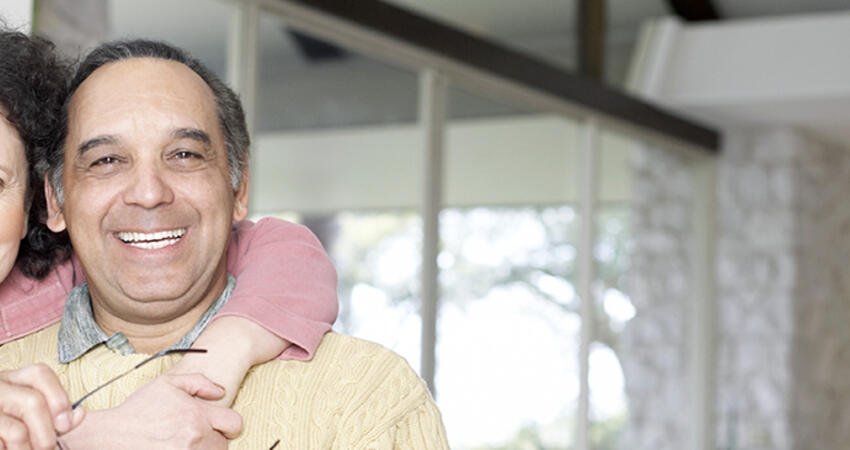
Reengineering Homes for Long-Term Safety and Visitability
Home is where the heart is, but home can also be an accident waiting to happen. Occupational therapist Susan Bachner, who helps people in Lexington, Kentucky, make their homes safer and more accessible, recalls working with a 70-year-old woman whose medical condition made it difficult to bend over or even lean forward. Small, daily activities such as loading the dishwasher, stooping to get items from low pantry shelves, and plugging appliances into wall outlets jeopardized her health and safety in her own home.
But the woman and her husband did not want to move. So, to keep them in their home, Bachner created a plan that included raising the height of the dishwasher by ten inches (25 cm) and installing a walk-in pantry and outlets at standing height.
“Sometimes, people wait too long to do something about things that seem like little inconveniences,” she says, “but one of the keys to success for aging in place is being proactive.”
And therein lies the problem.
The AARP Public Policy Institute has found that 87 percent of people age 65 and older want to age in their current home and community. But according to A Profile of Housing and Health among Older Americans, just around one in five older Americans lives in a home with accessibility features, such as a ramp, railings, or wheelchair accessibility. Safety features, such as grab bars and a safety alert system, are present in less than one in three older adults’ homes.
To honor people’s wishes to stay put, we have to step up efforts to make homes safer and more appropriate for people of all ages.
Safety from the Start
First off, if we want homes to meet the mobility and safety needs of older people, we need to build them that way, says Jon Pynoos, UPS Foundation Professor of Gerontology, Policy, Planning, and Development at the Andrus Gerontology Center of the University of Southern California.
“We need to stop the reversion to ‘cookie cutter’ homes that aren’t designed with the intention of aging in place,” he says.
Pynoos says some features could be designed for safety from the start; for example, having accessible shower stalls in all bathrooms. Others could be included with an eye to the future. Closets built at the same location on each floor allow a later renovation to accommodate an elevator, he says.
Pynoos also advocates that cities adopt “visitability codes” for residential construction. These building codes require entrances, corridors, and first floors to be wheelchair- and scooter-accessible. The state of California; Pima County, Arizona; and cities such as Atlanta and San Antonio have passed visitability legislation.
“Codes like this prevent the later cost of residents needing to renovate or make modifications to their homes, as the structures are built from inception to accommodate them, friends, and family members at all stages of life,” Pynoos says.
Updating “Peter Pan Homes”
Building new, safer homes will not solve the whole problem, though. Many Americans are already living in the homes they want to age in, and a large number of those houses were built as though people would “never grow old,” Pynoos says. He calls these residences “Peter Pan homes,” after the J.M. Barrie character.
Updating such homes to be safer can be relatively quick and inexpensive. Mike Eriksen, assistant professor of real estate at the University of Cincinnati, says that easy home updates include getting rid of throw rugs, adding benches and grab bars in showers, and replacing drawer and cabinet handles with easier-to-grasp knobs.
“Installing a grab bar near the toilet or in the shower can cost as little as $50,” Eriksen says—much less than an emergency room visit or a hospital stay after a fall. Eriksen and his colleagues Gary Engelhardt and Nadia Greenhalgh-Stanley estimate that home modifications lead to a dollar-for-dollar reduction in medical expenses related to serious falls.
Overcoming Barriers
Still, it can be hard for older adults to make changes. Even low-cost updates may strain the bank accounts of those living near or below the federal poverty level—more than 23 million Americans over age 60.
City- or state-sponsored programs can help with costs. For example, Philadelphia uses an independent contractor to offer free home modification services, such as installing stairway elevators and railings and widening doorways, to low-income residents and those with physical disabilities.
People also resist updating their homes for emotional and psychological reasons, Erikson says. They question the reliability of installation services and fear the cost and time involved. They may also think that safety features are ugly and send an unwanted message of frailty when family or friends come to visit.
Rather than try to convince people they need to reduce their risk of falls and accidents, Bachner makes her case in terms people can relate to.
“When I speak with my clients,” she says, “I often speak about modifications as a way to make their lives easier, more comfortable, and more enjoyable as they age.”
Yet, incorporating home accessibility features earlier and reducing the stigma of aging may be more effective in the long run. As architect Matthias Hollwich told the University of Pennsylvania’s Making Sense of Alzheimers blog, “The elderly are really you and me in a matter of years, and if we don’t like what will happen to us, then we need to reengineer how we will live.”


